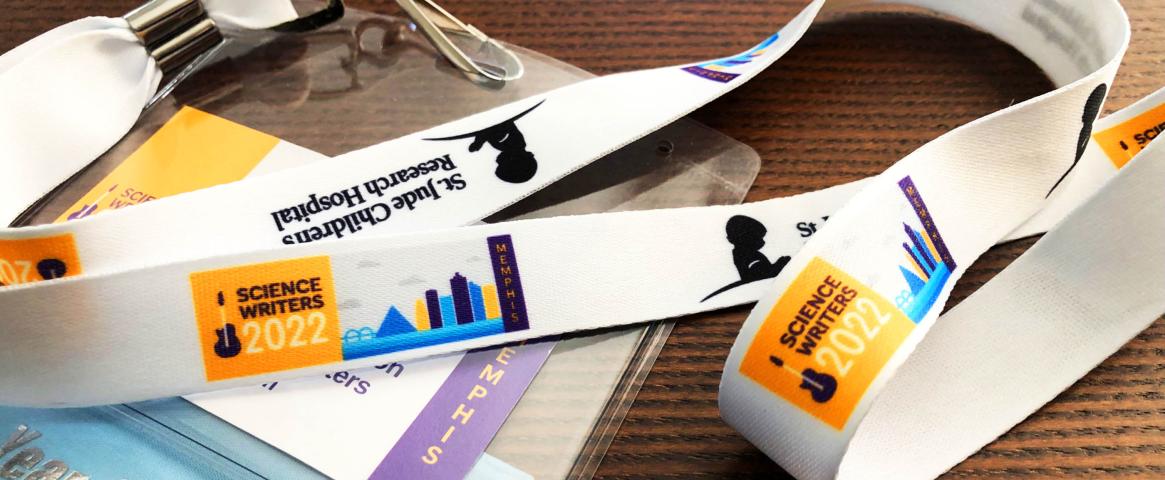Story by Hosen Arman
On the verge of a growing distance between scientists and faith communities, how should science writers approach faith communities to bridge the gap on conflict or misinformation issues — without compromising scientific facts? At the ScienceWriters2022 annual meeting, a panel of scientists from various religious traditions and a science journalist shared their insights and strategies for finding common grounds between scientific facts and religious values. “Science in Sacred Spaces: An Interfaith Dialogue on Science Communication with Faith Communities” was organized by Ciara Reyes-Ton of Biologos and Katy Hinman of the AAAS DoSER program.
From climate skepticism to vaccine hesitancy to evolution theory, drawing a line between science and faith was never easy. However, organizations like BioLogos and AAAS DoSER program, have been trying to facilitate communication between scientific and religious communities for decades.
A Gallup poll in 2021 shows that three-quarters of Americans associate with religion — and for half of them, religion is very important. “Engagement with faith-based communities is incredibly important,” said Dev Haarsma, an astronomer and president of BioLogos and a practicing Christian. “For these communities, they need to hear voices they trust.” That explains when scientific information gets an endorsement from faith leaders, it can have a big impact. She also mentioned that scientists from a religious tradition can be seen as a trusted voice in that community, which can help bridge the misinformation gap among those religious communities
“There is a lack of understanding of many of the scientific concepts in the religious communities,” said Fatima Jackson, a practicing Muslim and a professor of biology at Howard University. “It is important for science writers to learn the language of the groups they want to speak with and to understand their priorities.”
Misconception also exists in scientific communities. “There is a perception that being a person of faith is not welcomed [in science],” said Marni Gelbart, a geneticist at Harvard Medical School and Judaism practitioner. Gelbart has heard many scientists say they should check their faith in the door before entering the lab.
Science journalists can play an important part to help the general public to understand complex scientific language. “The importance of journalism cannot be underestimated in terms of facilitating the bridge between science and societies,” said Nalini Nadkarni, who teaches biology at the University of Utah and embraces Quakerism. But the workshop panelists advise reporters to go beyond simply delivering the science news — and actually make the cultural and contextual connection.
“Be intellectually curious when covering polarizing topics. Dig deeper and try to understand people’s motivation. You may end up with a more complex and accurate story”, said Rebecca Randall, a science journalist. Randall was previously a science editor at Christianity Today and had extensively covered faith and the environment, science in historically marginalized communities, and equities. She mentioned a few important resources regarding ways to find sources when covering faith and science. Organizations, such as The American Scientific Affiliation and Society for the Scientific Study of Religion could be great sources to find experts at the intersection of science and faith.
“We all have a role to play. We have to do the work early and often as much as we can”, said Gelbart.
Hosen Arman (@hosenmarman) is a recent graduate from Rutgers University Camden with a biology degree. He currently works at the New Jersey Department of Health as an APHL-CDC environmental health fellow.
This ScienceWriters2022 conference coverage article was produced as part of the NASW Conference Support Grant awarded to Arman to attend the ScienceWriters2022 national conference. Find more 2022 conference coverage at www.nasw.org
A co-production of the National Association of Science Writers (NASW), the Council for the Advancement of Science Writing (CASW), and St. Jude Children's Research Hospital, the ScienceWriters2022 national conference featured an online portion Oct. 12-19, followed by an in-person portion held in Memphis, Tenn. Oct. 21-25. Learn more at www.sciencewriters2022.org and follow the conversation on Twitter at #SciWri22
Credits: Reporting by Hosen Arman; edited by Ben Young Landis. Photo by Ben Young Landis/NASW

